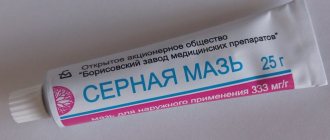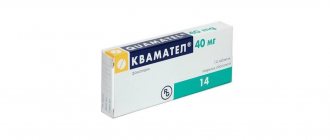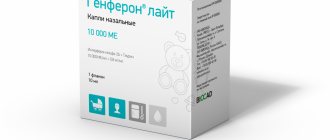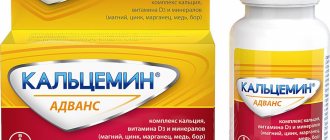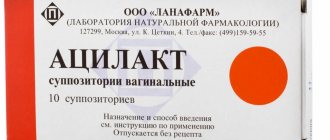Diarrhea is an extremely unpleasant disorder that can take both children and adults by surprise. Stopdiar will help eliminate the cause of the disease - harmful bacteria. The drug is distinguished by a variety of dosage forms, the absence of a negative effect on the intestinal microflora and an affordable price.
Review of dosage forms
So that every buyer can choose the right option, Stopdiar is available in three dosage forms:
- round yellow film-coated tablets, one piece contains 100 mg of nifuroxazide, each package contains 24 tablets in an aluminum blister and instructions for use;
- yellow gelatin capsules containing 200 mg of nifuroxazide, one package contains 12 pieces;
- suspension, 5 ml of which contains 220 ml of nifuroxazide. It has a light yellow color and a banana smell. The 125 ml dark glass bottle is sold complete with a measuring spoon.
The main component of all forms is a substance with an antibacterial effect, nifuroxazide. Excipients in tablets include talc, colloidal silicon dioxide, potato starch, gelatin, magnesium stearate.
The suspension contains sucrose, sodium hydroxide, citric acid monohydrate, simethicone, methyl parahydroxybenzoate, banana flavor. The capsules additionally contain corn starch, magnesium stearate, sucrose, and pregelatinized corn starch.
Stopdiar 220 mg/5 ml 90 ml suspension. for oral administration
Instructions for medical use of the drug Stopdiar® Trade name Stopdiar® International nonproprietary name Nifuroxazide Dosage form Suspension 220 mg/5 ml 90 ml Composition 5 ml suspension contains the active substance - nifuroxazide 220 mg, excipients: citric acid, sodium hydroxide, banana essence, methyl parahydroxybenzoate, carbomer, simethicone emulsion 30%, sucrose, purified water. Description The suspension is light yellow in color, with a banana odor. During storage, it settles slightly, after shaking it turns into a homogeneous suspension without the formation of a dense sediment at the bottom of the bottle. Pharmacotherapeutic group Antidiarrheal drugs. Intestinal antimicrobial and anti-inflammatory drugs. Other intestinal antimicrobials. Nifuroxazide Code ATC A07AX03 Pharmacological properties Pharmacokinetics After taking the drug orally, it is practically not absorbed from the gastrointestinal tract, creating a high concentration of the active substance in the intestine and exhibiting its antibacterial effect only in the intestinal lumen. Completely excreted in feces. Pharmacodynamics Nifuroxazide is a derivative of 5-nitrofuran. It has a local antibacterial effect in the intestinal lumen against gram-positive bacteria from the genus Staphylococcus and gram-negative bacteria from the family Enterobacteriaceae from the genus: Yersinia sp., Escherichia spp., Citobacter spp., Enterobacter spp., Klebsiella spp., Salmonella spp. At moderate therapeutic doses it has bacteriostatic activity, and at higher doses it has a bactericidal effect. Nifuroxazide does not exhibit an antibacterial effect on bacteria of the species: Proteus vulgaris, Proteus mirabilis and Pseudomonas aeruginosa. Nifuroxazide does not destroy the saprophytic microflora of the digestive tract, does not disturb the balance of normal intestinal flora, and does not cause the formation of resistant strains. Nifuroxazide has an inhibitory effect on the activity of dehydrogenases and protein synthesis in bacterial cells. The effectiveness of the drug does not depend on the pH in the intestinal lumen. Indications for use - acute bacterial diarrhea in addition to rehydration, if there is no suspicion of spread of infection to other organs and systems. The degree of rehydration using oral or intravenous solutions for rehydration is determined in accordance with the severity of diarrhea, age and health status of the patient (comorbidities, etc.) .e) Method of administration and dosage of Stopdiar®, suspension is prescribed: Children aged 2 to 6 months: 110 mg (2.5 ml, small measuring spoon of suspension) 2 times a day, every 12 hours. Children aged 7 months and older: 220 mg (5 ml, large measuring spoon of suspension) 3 times a day every 8 hours. Adults and children over 14 years of age: 220 mg (5 ml, large measuring spoon of suspension) 4 times a day every 6 hours. Before taking Stopdiar®, the bottle should be shaken several times to obtain a homogeneous suspension. Having measured the prescribed dose, the suspension must be swallowed; You can drink it with water. The course of treatment of the drug is no more than 7 days. If the drug is not effective within 2 days of treatment, a doctor’s consultation is necessary to make treatment corrections. During the treatment of acute diarrhea with the drug, constant oral or intravenous replenishment of fluid deficiency in the body is mandatory, depending on the general condition of the patient. Side effects Often - abdominal pain, nausea, diarrhea Rarely - granulocytopenia - skin rash, allergic reactions, urticaria, Quincke's edema In individual cases of hypersensitivity to nifuroxazide, abdominal pain, nausea and exacerbation of diarrhea appear. If such symptoms of mild intensity occur, there is no need to use special therapy or discontinue the use of nifuroxazide. If symptoms are severe, you should stop taking the medication. In this case, it is necessary to avoid prescribing nitrofuran derivatives to the patient. Contraindications - increased individual sensitivity to the components of the drug, including other 5-nitrofuran derivatives - fructose intolerance, glucose-galactose malabsorption syndrome, sucrase-isomaltase deficiency - premature babies and newborns in the first month of life Drug interactions Drinking alcohol during treatment with Stopdiar® may cause disulfiram-like reactions. During treatment with the drug, other oral medications should not be taken simultaneously due to the strong absorption properties of the drug. Special instructions Stopdiar® is not recommended to be taken for more than 7 days. In case of continuing diarrhea after 2 days of treatment, consultation with a doctor is necessary to decide on further treatment tactics. In case of severe invasive diarrhea, an antibiotic should be administered, since the drug Stopdiar® is not absorbed from the gastrointestinal tract. During the period of use of the drug, it is necessary to follow a diet excluding juices, raw vegetables and fruits, spicy and indigestible foods and dishes. If a hypersensitivity reaction occurs (shortness of breath, skin rash, itching), you should stop taking the drug. Due to the pronounced adsorbing properties of the drug, simultaneous oral administration of other medications should be avoided. During treatment with Stopdiar®, the consumption of alcoholic beverages is contraindicated, because alcohol increases the body's sensitivity to the drug and can provoke a disulfiram-like reaction, manifested by exacerbation of diarrhea, vomiting, abdominal pain, skin flushing, a feeling of heat in the face and upper body, noise in the head, difficulty breathing, tachycardia, and a feeling of fear. If symptoms of dehydration appear during treatment with the drug, rehydration therapy (about 2 liters of fluid per day) should be carried out in accordance with the patient’s clinical condition. Due to the presence of sucrose in the drug, patients with rare hereditary disorders associated with fructose intolerance, poor glucose-galactose resorption syndrome or sucrase-isomaltase deficiency should not take this drug. Due to the content of parahydroxybenzoate, the drug may cause delayed allergic reactions. Pregnancy and lactation As a precautionary measure, it is preferable not to take during pregnancy, since there is insufficient clinical data to evaluate the teratogenic or fetotoxic effects of nifuroxazide. Nifuroxazide is not absorbed from the digestive tract. However, due to the lack of sufficient clinical data, caution should be exercised when prescribing nifuroxazide during lactation. Peculiarities of the drug's influence on the ability to drive a vehicle or operate potentially dangerous mechanisms. No effect. Overdose Symptoms: increased side effects. Treatment: gastric lavage, symptomatic therapy. Release form and packaging 90 ml of the drug in orange glass bottles, sealed with a plastic cap. 1 bottle, together with a double measuring spoon with a capacity of 2.5 ml and 5 ml and with instructions for medical use in the state and Russian languages, is placed in a cardboard box. Storage conditions Store at temperatures between 15 0C and 25 0C. Keep out of the reach of children! Shelf life: 3 years Do not use after the expiration date indicated on the package. The period of use after opening the bottle is 14 days. Conditions for dispensing from pharmacies By prescription Name and country of the organization - A.O., Romania Name and country of the owner of the registration certificate JSC Gedeon Richter, Hungary Name and country of the organization of the packer "Gedeon Richter Romania" A.O., Romania Address of the receiving organization on the territory of the Republic of Kazakhstan, claims from consumers regarding product quality: Representative office of JSC Gedeon Richter in the Republic of Kazakhstan E-mail: [email protected] richter.kz Telephone: 8-(727)- 258-26-22, 8-(727)- 258-26-23
Mechanism of action of the drug
Due to nifuroxazide, Stopdiar has an antibacterial effect against pathogens of intestinal infections - pathogenic or opportunistic microorganisms.
The medication inhibits the action of enzymes involved in the metabolism of infectious agents at the cell level. As a result of the destruction of cell membranes, bacteria die.
Stopdiar is active against infectious agents during long courses of treatment and does not have a negative effect on the intestinal microflora. The substance is not an antibiotic, so restoration of the gastrointestinal tract after treatment does not take much time.
The main component does not enter the bloodstream, is minimally absorbed in the intestines, and has no systemic effect on the body. The drug gives a therapeutic effect in the intestines and is eliminated from the body naturally.
How to take Stopdiar
The method and regimen of use depend on the dosage form of the drug.
In accordance with the instructions for use of Stopdiar, tablets are taken 4 times a day with an interval of 6 hours.
Adults and children over the age of seven are prescribed two pieces. The tablets cannot be crushed, they cannot be chewed, but must be swallowed whole and washed down with a sufficient amount of water. The duration of therapy is three days. If symptoms persist, you should see a doctor.
Capsules are prescribed for adults and children over 6 years old, one capsule four times a day, for children 3-6 years old, one capsule three times a day. The course of treatment is three days.
The suspension is taken in accordance with the dosages recommended by the manufacturer:
- adults and children over 6 years old – 5 ml four times a day;
- children from 6 months to 6 years – 5 ml three times a day;
- infants from 2 to 6 months – 2.5-5 ml twice a day.
Before use, the contents of the bottle must be shaken so that the substance becomes homogeneous. Duration of treatment: 5-7 days.
Stopdiar (susp. for intravenous administration 220 mg/5 ml 90 ml)
A country
Romania
The country of production may vary depending on the batch of goods. Please check with the operator for detailed information when confirming your order.
Active substance
Nifuroxazide
Compound
Bottle 90 ml
Nifuroxazide 220 mg per 5 ml. Excipients: carbomer - 11 mg, sucrose - 1100 mg, sodium hydroxide - 2.2 mg, citric acid monohydrate - 0.83 mg, simethicone emulsion 30% (antifoam emulsion) - 11 mg, methyl parahydroxybenzoate - 5.5 mg, banana flavor - 4.57 mg, water - up to 5 ml. Suspension for oral administration is light yellow in color, with a banana odor. During storage, sediment may form; after shaking, it returns to the state of a homogeneous suspension.
pharmachologic effect
Nifuroxazide is an antimicrobial agent derived from nitrofuran. Blocks the activity of dehydrogenases and inhibits the respiratory chain, the tricarboxylic acid cycle and a number of other biochemical processes in the microbial cell. Destroys the microbial cell membrane, reduces the production of toxins by microorganisms. Highly active against Campylobacter jejuni, Escherichia coli, Salmonella spp., Shigella spp.; Clostridium perfringens, Vibrio cholerae, pathogenic Vibrions and Vibrio parahaemolytique, Staphylococcus spp. Weakly sensitive to nifuroxazide: Citrobacter spp., Enterobacter cloacae and Proteus indologenes. Resistant to nifuroxazide: Klebsiella spp., Proteus mirabilis, Providencia spp., Pseudomonas spp. Nifuroxazide does not disturb the balance of intestinal microflora. In acute bacterial diarrhea, it restores intestinal eubiosis. When infected with enterotropic viruses, it prevents the development of bacterial superinfection.
Indications for use
Acute bacterial diarrhea, occurring without deterioration in general condition, increase in body temperature, or intoxication.
Mode of application
The drug is used orally. Before taking the drug, shake the bottle several times so that the suspension becomes homogeneous. The drug can be taken with water. Children aged 1 to 6 months: 110 mg (1 small scoop of suspension) 2-3 times a day (interval between doses 8-12 hours). Children aged 6 months to 3 years: 110 mg (1 small scoop of suspension) 3 times a day (interval between doses 8 hours). Children aged 3 to 6 years: 220 mg (1 large scoop of suspension) 3 times a day (interval between doses 8 hours). Children aged 6 to 18 years: 220 mg (1 large scoop of suspension) 3-4 times a day (interval between doses 6-8 hours). Adults: 220 mg (1 large scoop of suspension) 4 times a day (interval between doses 6 hours). The drug Stopdiar should be used for 5-7 days, but not more than 7 days. If there is no improvement within the first 3 days of taking it, you should consult a doctor. The drug should be used only in accordance with the method of application and in the doses indicated in the instructions. If necessary, consult a doctor before using the drug.
Interaction
Concomitant use with drugs that cause the development of disulfiram-like reactions and with drugs that depress the function of the central nervous system is not recommended. If the patient is taking other medications (including over-the-counter medications), you should consult your doctor before using Stopdiar.
Side effect
Allergic reactions: skin rash, urticaria, Quincke's edema, anaphylactic shock.
Contraindications
- hypersensitivity to nifuroxazide, nitrofuran derivatives or any excipients of the drug;
- fructose intolerance, glucose-galactose malabsorption syndrome or sucrase and isomaltase deficiency; - pregnancy; — neonatal period up to 1 month; - prematurity. Use during pregnancy and lactation No teratogenic effect was detected in animal studies. However, as a precaution, taking nifuroxazide during pregnancy is not recommended. During the lactation period, it is possible to continue breastfeeding in case of a short course of treatment with the drug. You should consult your doctor.
Overdose
Overdose symptoms are not known. In case of overdose, symptomatic treatment should be carried out.
special instructions
When treating diarrhea, rehydration therapy must be carried out simultaneously with nifuroxazide therapy. Treatment of diarrhea in children under 3 years of age is recommended under medical supervision. In case of bacterial diarrhea with signs of systemic damage (deterioration of general condition, increased body temperature, symptoms of intoxication or infection), you should consult a doctor to decide on the use of systemic antibacterial drugs. If symptoms of hypersensitivity occur (shortness of breath, rash, itching), you should stop taking the drug. Alcohol consumption is prohibited during therapy. The drug Stopdiar contains sucrose. Patients with rare hereditary disorders of fructose tolerance, glucose-galactose malabsorption, or sucrase and isomaltase deficiency should not take this drug. Due to the content of methyl parahydroxybenzoate, Stopdiar may cause allergic reactions (possibly delayed). 1 small measuring spoon of suspension contains 0.09 XE, 1 large measuring spoon of suspension contains 0.18 XE. The daily dose of the suspension for children aged 1 month to 3 years contains 0.27 XE. The daily dose of the suspension for children aged 3 to 6 years contains 0.54 XE. The maximum daily dose of the suspension for children aged 6 to 18 years contains 0.72 XE. The daily dose of the suspension for adults contains 0.72 XE. Effect on the ability to drive vehicles and machinery The drug does not affect the ability to drive vehicles and machinery.
Contraindications and side effects
The instructions for use of Stopdiar indicate that the drug is not prescribed for hypersensitivity to nifuroxazide or other ingredients of the dosage forms.
The conditions under which Stopdiar is prohibited depend on its type. Tablets are not prescribed to preschool children, the suspension is not prescribed to premature infants and newborns under two months of age.
Capsules are contraindicated for persons with fructose intolerance, glucose-galactose malabsorption syndrome, children under three years of age, and pregnant women.
As a rule, the medication does not cause adverse reactions and is easily tolerated by patients. However, if there is a personal hypersensitivity to this antibacterial substance, then the following may occur:
- pain in the abdomen;
- attacks of nausea and loose stools;
- skin rash;
- allergic reactions in the form of shortness of breath, swelling of the tongue, face and lips, skin rashes and itching.
Stopdiar suspension orally 220 mg/5 ml 90 ml
Compound
Active substance: nifuroxazide 220 mg. Excipients: carbomer, sucrose, citric acid monohydrate, sodium hydroxide, methyl parahydroxybenzoate, 30% simethicone emulsion (antifoam emulsion), banana flavor, water.
Pharmacokinetics
After oral administration, nifuroxazide is practically not absorbed from the gastrointestinal tract and exerts its antibacterial effect exclusively in the intestinal lumen. Nifuroxazide is excreted through the intestines: 20% unchanged, and the rest of nifuroxazide in a chemically modified form.
Indications for use
Acute bacterial diarrhea, occurring without deterioration in general condition, increase in body temperature, or intoxication.
Contraindications
- Hypersensitivity to nifuroxazide, nitrofuran derivatives or any excipients of the drug;
- fructose intolerance, glucose-galactose malabsorption syndrome or sucrase and isomaltase deficiency;
- pregnancy;
- neonatal period up to 1 month;
- prematurity.
Directions for use and doses
The drug is used orally.
Before taking the drug, shake the bottle several times so that the suspension becomes homogeneous. The drug can be taken with water.
- Children aged 1 to 6 months: 110 mg (1 small scoop of suspension) 2-3 times a day (interval between doses 8-12 hours).
- Children aged 6 months to 3 years: 110 mg (1 small scoop of suspension) 3 times a day (interval between doses 8 hours).
- Children aged 3 to 6 years: 220 mg (1 large scoop of suspension) 3 times a day (interval between doses 8 hours).
- Children aged 6 to 18 years: 220 mg (1 large scoop of suspension) 3-4 times a day (interval between doses 6-8 hours).
- Adults: 220 mg (1 large scoop of suspension) 4 times a day (interval between doses 6 hours).
The drug Stopdiar should be used for 5-7 days, but not more than 7 days. If there is no improvement within the first 3 days of taking it, you should consult a doctor.
The drug should be used only in accordance with the method of application and in the doses indicated in the instructions. If necessary, consult a doctor before using the drug.
Storage conditions
The drug should be stored out of the reach of children at a temperature not exceeding 25°C.
Best before date
3 years. Do not use after the expiration date stated on the package. An opened bottle should be stored for no more than 14 days.
special instructions
When treating diarrhea, rehydration therapy must be carried out simultaneously with nifuroxazide therapy.
Treatment of diarrhea in children under 3 years of age is recommended under medical supervision.
In case of bacterial diarrhea with signs of systemic damage (deterioration of general condition, increased body temperature, symptoms of intoxication or infection), you should consult a doctor to decide on the use of systemic antibacterial drugs.
If symptoms of hypersensitivity occur (shortness of breath, rash, itching), you should stop taking the drug.
Alcohol consumption is prohibited during therapy.
The drug Stopdiar contains sucrose. Patients with rare hereditary disorders of fructose tolerance, glucose-galactose malabsorption, or sucrase and isomaltase deficiency should not take this drug.
Due to the content of methyl parahydroxybenzoate, Stopdiar may cause allergic reactions (possibly delayed).
1 small measuring spoon of suspension contains 0.09 XE, 1 large measuring spoon of suspension contains 0.18 XE.
The daily dose of the suspension for children aged 1 month to 3 years contains 0.27 XE. The daily dose of the suspension for children aged 3 to 6 years contains 0.54 XE. The maximum daily dose of the suspension for children aged 6 to 18 years contains 0.72 XE.
The daily dose of the suspension for adults contains 0.72 XE.
Description
Antimicrobial agent - nitrofuran.
Use in children
Contraindicated in newborns under 1 month and premature babies.
Before prescribing the suspension to infants, it is necessary to exclude congenital deficiency of enzymes that break down sucrose.
Pharmacodynamics
Nifuroxazide is an antimicrobial agent derived from nitrofuran. Blocks the activity of dehydrogenases and inhibits the respiratory chain, the tricarboxylic acid cycle and a number of other biochemical processes in the microbial cell. Destroys the microbial cell membrane, reduces the production of toxins by microorganisms.
Highly active against Campylobacter jejuni, Escherichia coli, Salmonella spp., Shigella spp.; Clostridium perfringens, Vibrio cholerae, pathogenic Vibrions and Vibrio parahaemolytique, Staphylococcus spp.
Weakly sensitive to nifuroxazide: Citrobacter spp., Enterobacter cloacae and Proteus indologenes.
Resistant to nifuroxazide: Klebsiella spp., Proteus mirabilis, Providencia spp., Pseudomonas spp.
Nifuroxazide does not disturb the balance of intestinal microflora. In acute bacterial diarrhea, it restores intestinal eubiosis. When infected with enterotropic viruses, it prevents the development of bacterial superinfection.
Side effects
Allergic reactions: skin rash, urticaria, Quincke's edema, anaphylactic shock.
If any of these adverse reactions worsen, or the patient notices any other adverse reactions, he should inform the doctor.
Use during pregnancy and breastfeeding
In animal studies, no teratogenic effect was detected. However, as a precaution, taking nifuroxazide during pregnancy is not recommended.
During the lactation period, it is possible to continue breastfeeding in case of a short course of treatment with the drug.
You should consult your doctor.
Interaction
Concomitant use with drugs that cause the development of disulfiram-like reactions and with drugs that depress the function of the central nervous system is not recommended.
If the patient is taking other medications (including over-the-counter medications), you should consult your doctor before using Stopdiar.
Overdose
Overdose symptoms are not known.
In case of overdose, symptomatic treatment should be carried out.
Impact on the ability to drive vehicles and operate machinery
The drug does not affect the ability to drive vehicles and machinery.
special instructions
When treating with Stopdiar, it is important to drink enough fluid to replenish fluid loss due to diarrhea.
Avoid drinking alcoholic beverages due to the risk of a disulfiram-like reaction. If you have an allergic reaction, you should stop taking the medication and consult a doctor.
The ability to drive a car or operate complex machinery is not affected.
If the patient takes several medications, then it is necessary to wait 2-3 hours between doses, since Stopdiar is able to remove another drug from the body and prevent it from being absorbed.

